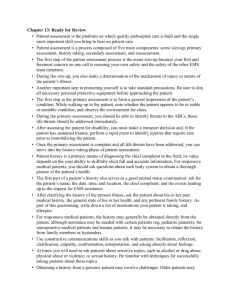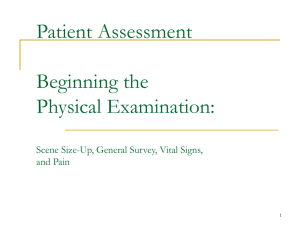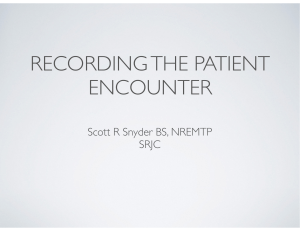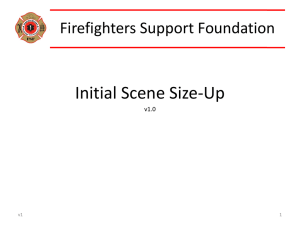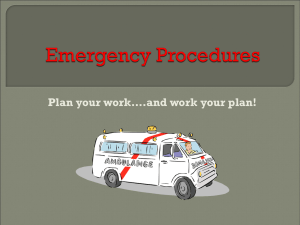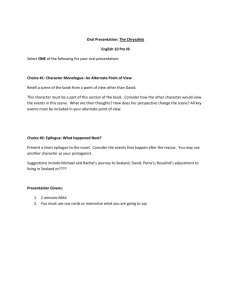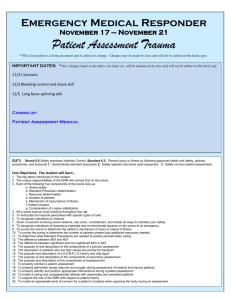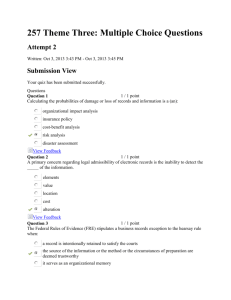Patient Assessment - Emergency Medical Responder
advertisement
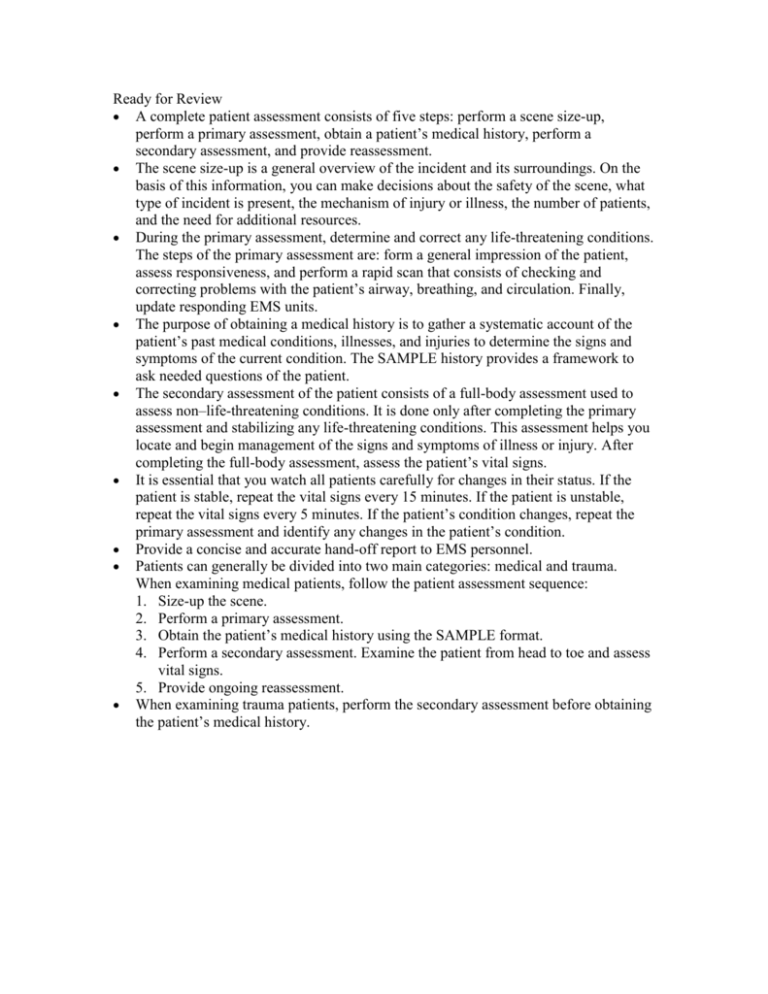
Ready for Review A complete patient assessment consists of five steps: perform a scene size-up, perform a primary assessment, obtain a patient’s medical history, perform a secondary assessment, and provide reassessment. The scene size-up is a general overview of the incident and its surroundings. On the basis of this information, you can make decisions about the safety of the scene, what type of incident is present, the mechanism of injury or illness, the number of patients, and the need for additional resources. During the primary assessment, determine and correct any life-threatening conditions. The steps of the primary assessment are: form a general impression of the patient, assess responsiveness, and perform a rapid scan that consists of checking and correcting problems with the patient’s airway, breathing, and circulation. Finally, update responding EMS units. The purpose of obtaining a medical history is to gather a systematic account of the patient’s past medical conditions, illnesses, and injuries to determine the signs and symptoms of the current condition. The SAMPLE history provides a framework to ask needed questions of the patient. The secondary assessment of the patient consists of a full-body assessment used to assess non–life-threatening conditions. It is done only after completing the primary assessment and stabilizing any life-threatening conditions. This assessment helps you locate and begin management of the signs and symptoms of illness or injury. After completing the full-body assessment, assess the patient’s vital signs. It is essential that you watch all patients carefully for changes in their status. If the patient is stable, repeat the vital signs every 15 minutes. If the patient is unstable, repeat the vital signs every 5 minutes. If the patient’s condition changes, repeat the primary assessment and identify any changes in the patient’s condition. Provide a concise and accurate hand-off report to EMS personnel. Patients can generally be divided into two main categories: medical and trauma. When examining medical patients, follow the patient assessment sequence: 1. Size-up the scene. 2. Perform a primary assessment. 3. Obtain the patient’s medical history using the SAMPLE format. 4. Perform a secondary assessment. Examine the patient from head to toe and assess vital signs. 5. Provide ongoing reassessment. When examining trauma patients, perform the secondary assessment before obtaining the patient’s medical history.
